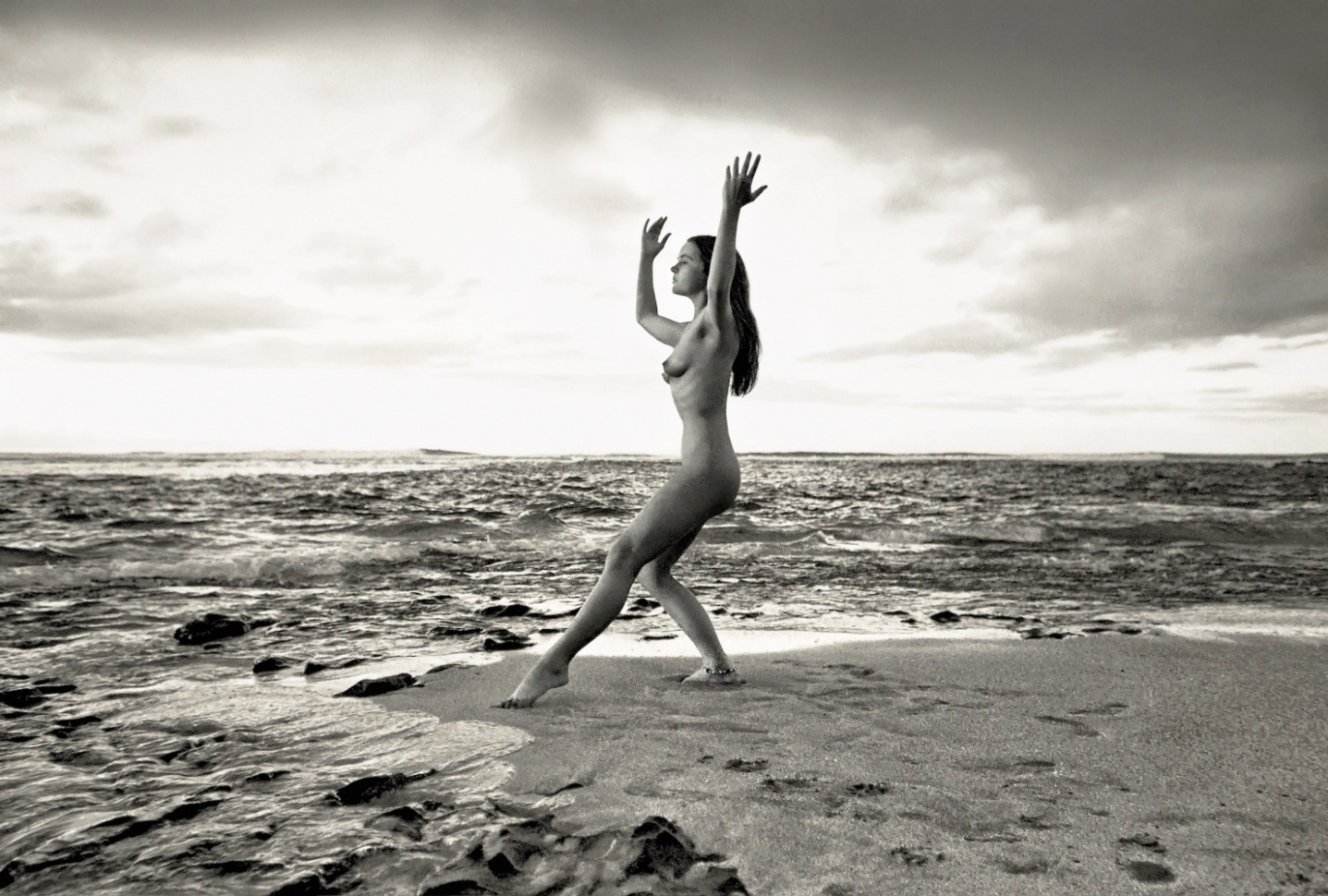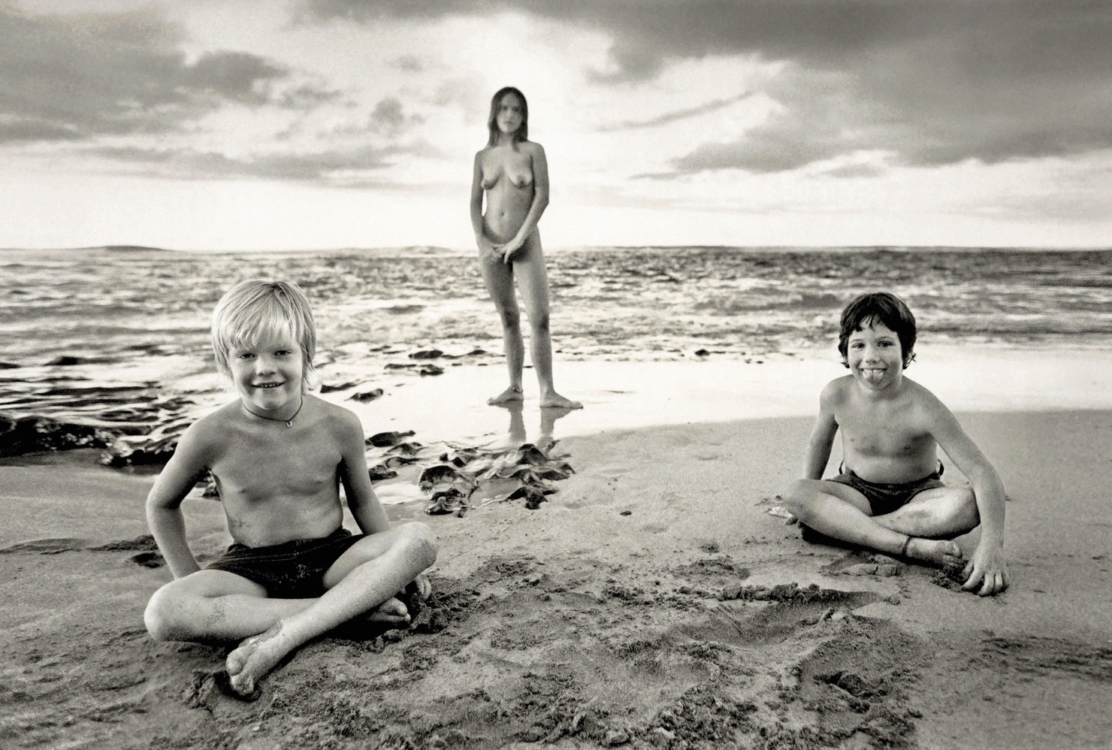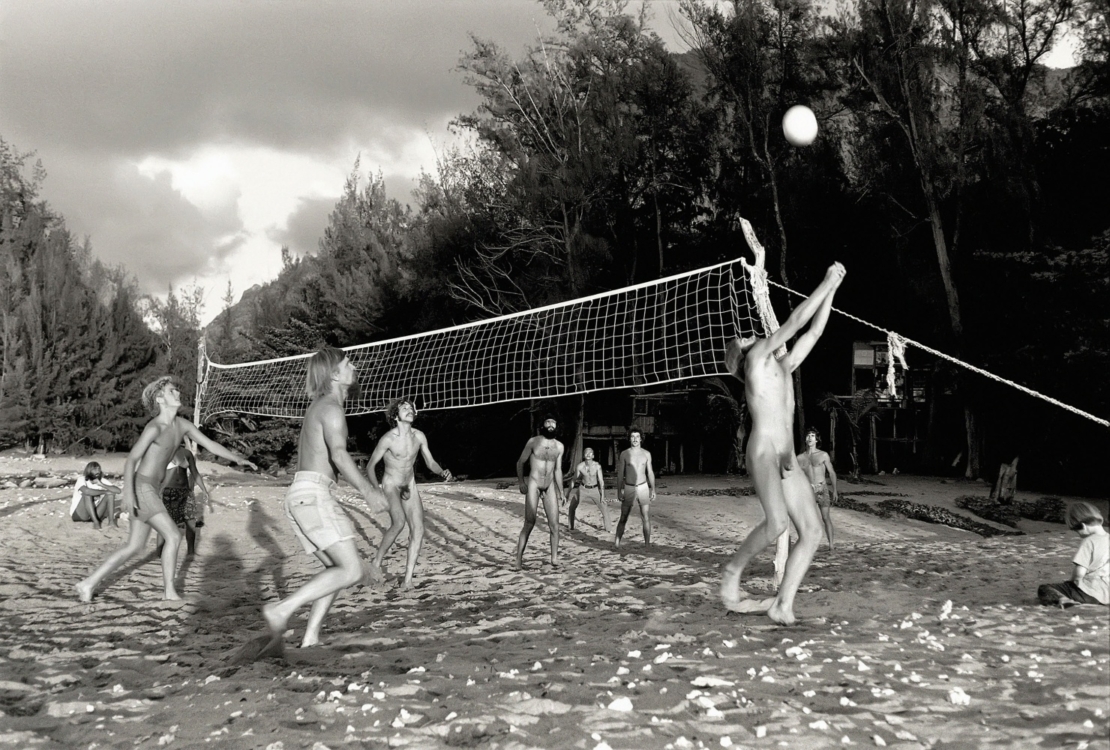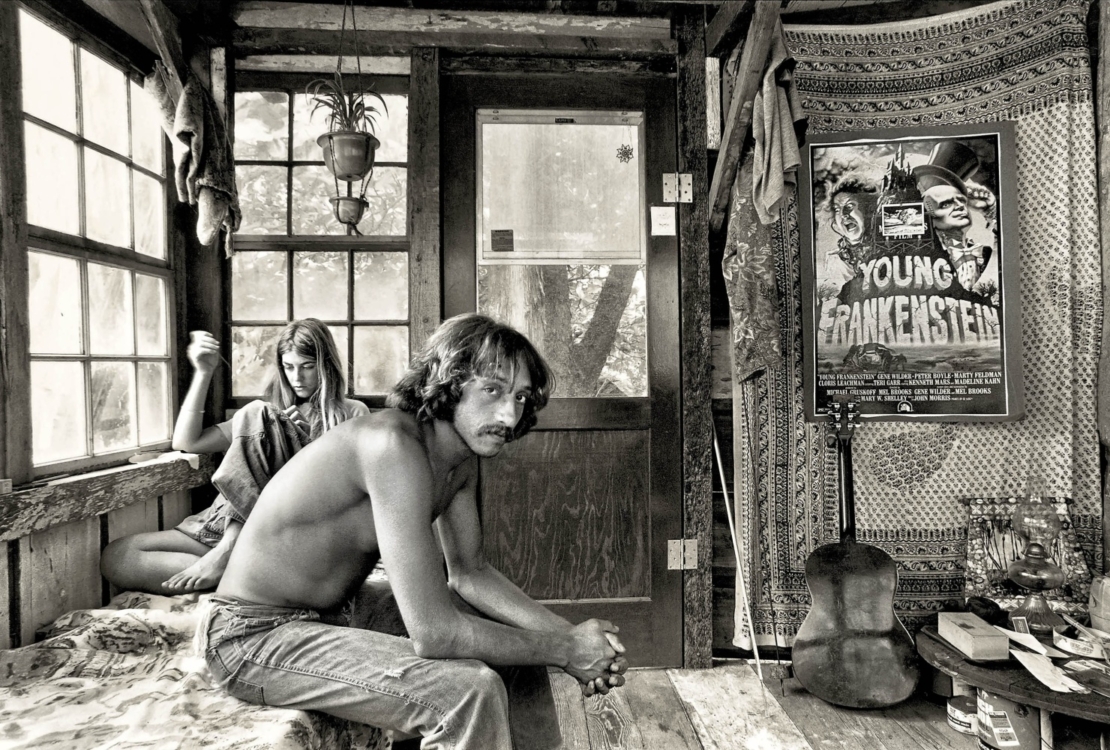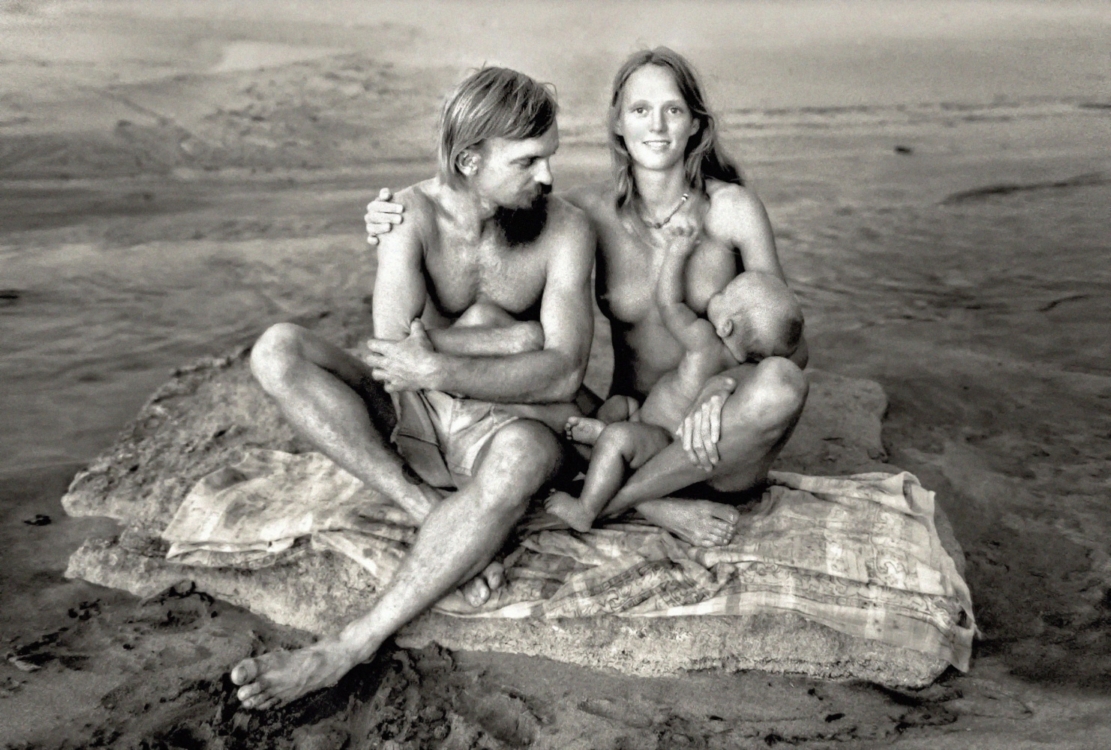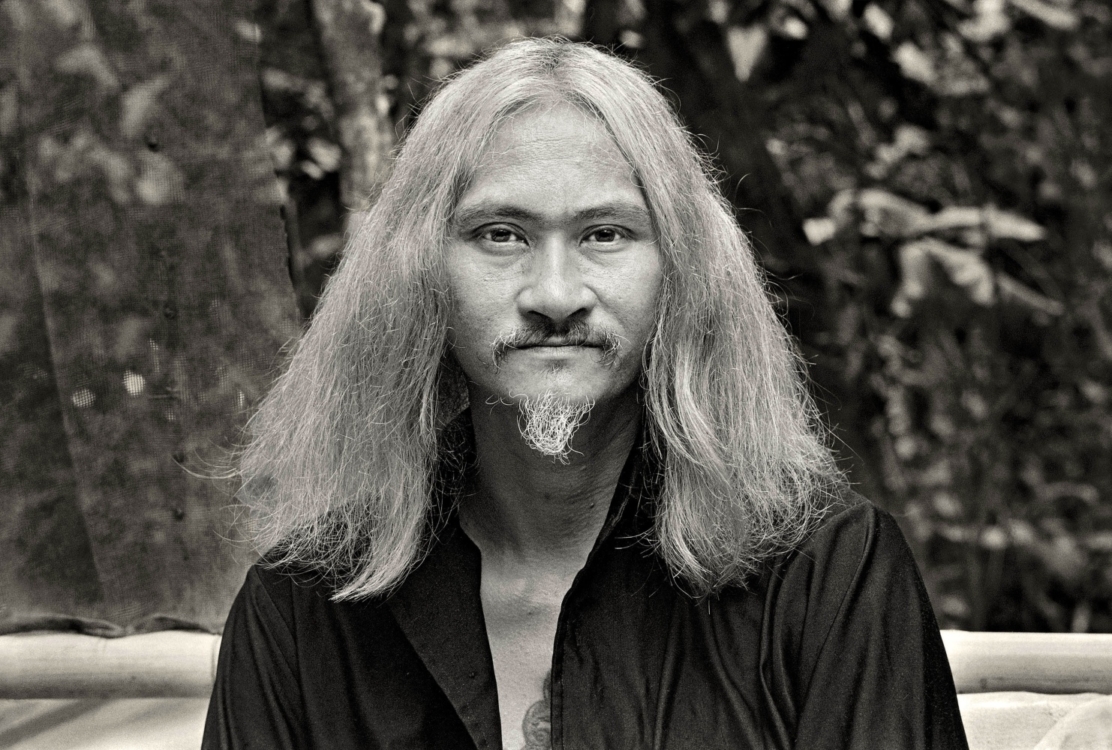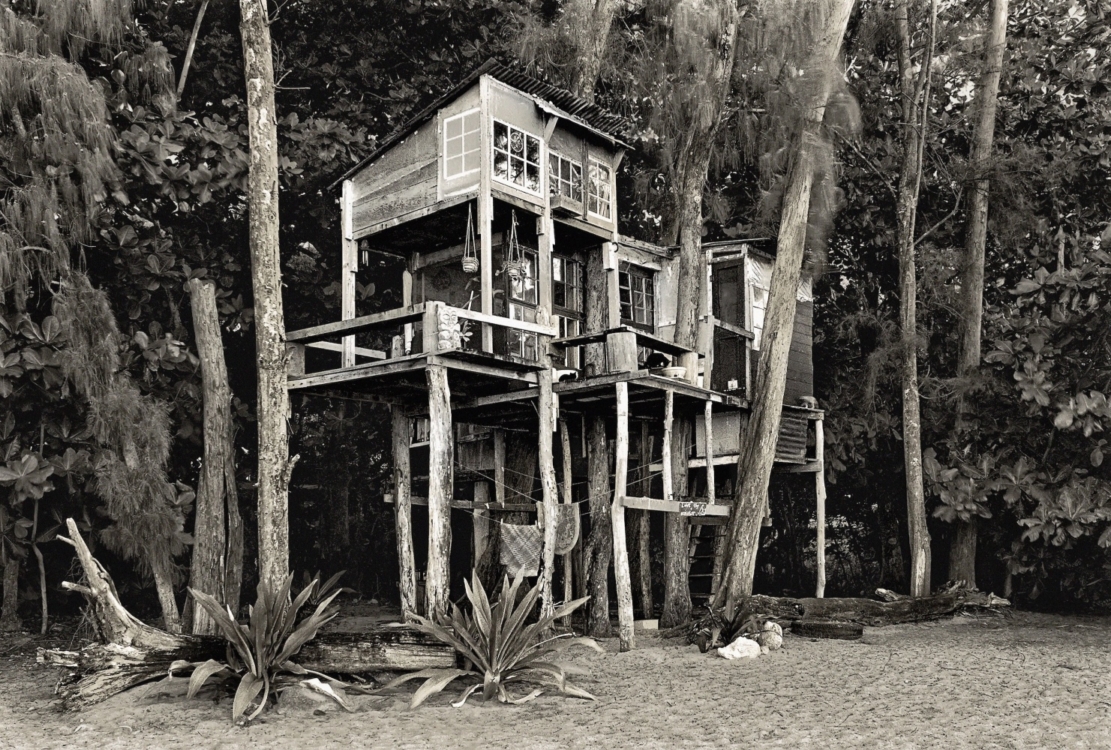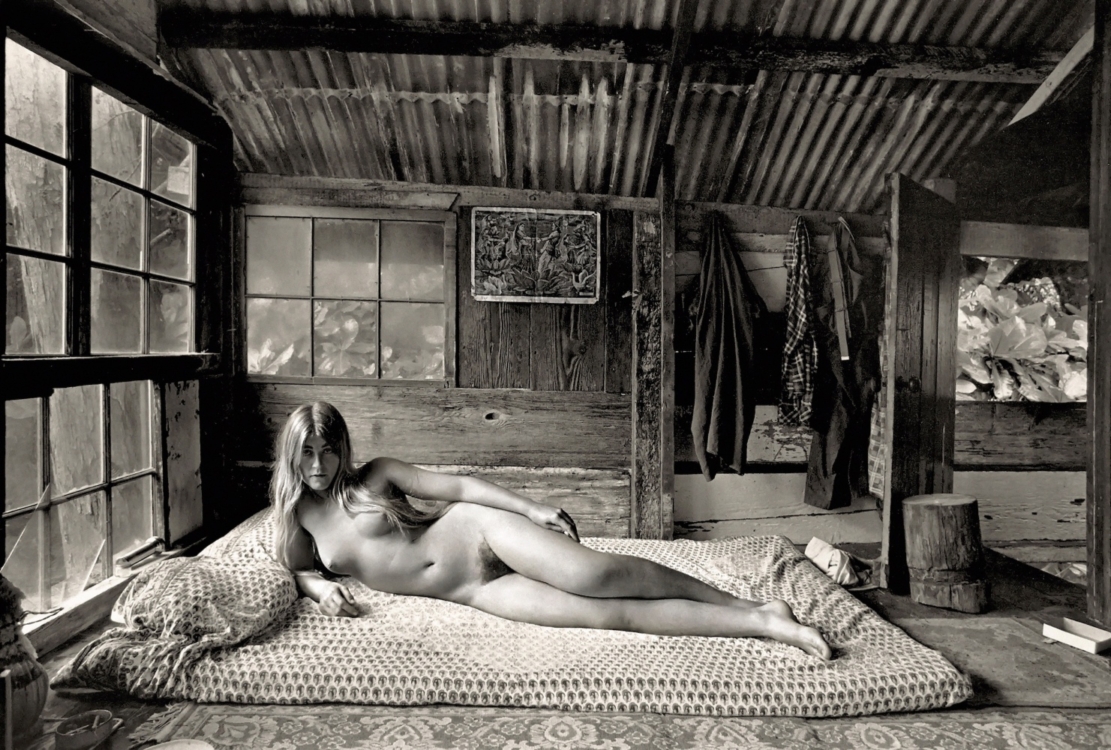I Perceived Taylor Camp as a Small-Scale Model of Human Society Pavel Klusák
Photographer John Wehrheim was in the right place at the right time. In the 1970s, he managed to create a unique photographic documentation of the Taylor Camp community on the Hawaiian island of Kauai. The turn of the 1960s and 1970s was a socially turbulent time which fuelled the ideals that encouraged more radical-minded Americans and other Westerners to break from mainstream society. At a cursory glance, the account of the Taylor Camp experience has, perhaps, the superficial appeal of an exuberant life, exoticism, nudity, and psychotropic substances. A closer look, as well as a conversation with photographer, film-maker, and hydroelectric power plant builder John Wehrheim JW, reveals that it was the implementation of a distinctive model of society that continues to inspire and raise questions to this day.
Howard Taylor was the brother of Hollywood star Eilzabeth Taylor. In 1969, he owned a seven-acre plot on the north shore of Kauai – one of the main Hawaiian islands. He invited a group of young men, women and children who had recently been arrested for vagrancy, that is the thirteen original colonists, to set up a camp there. Although none of the original thirteen people remained at the site even one year, the new settlers established a place to live: they built tree houses and created a self-sustaining community through unwritten laws with a mayor, sheriff, food co-op, public water supply system, and many other facilities.
John Wehrheim was never a long-term resident of Taylor Camp but, in 1971, during a visit to the camp, he began taking photographs there. He returned several years later to complete an extensive collection of documentary photographs. Wehrheim recalls that when he first arrived with two cameras, a bag of lenses, and a tripod, everyone disappeared and the alley between the dwellings fell silent. The exception was two brave girls curious about the twenty-three-year-old young man: Debi Green and her sister Teri. When Wehrheim returned a week later, he brought with him, as a gift, beautifully reproduced prints of the sisters in a large format. Suddenly, everyone wanted to have their pictures taken.Q What happened when the people at Taylor Camp started to trust you?
J W Within a few weeks, I was keeping a book of appointments, full of notes and invitations. The locals bribed me with dinner invitations, good-quality weed, amazing parties and offers of accommodation. I took portraits of all those who were interested, and then assumed the role of an unobtrusive observer. My subject was actually the residents, not the camp: young, beautiful people, healthy, in great shape, often naked; many excellent athletes and skilled surfers. When I felt that people weren’t relaxed and open enough while I was taking pictures, I wandered around until they forgot about my presence and became bored. The men and women, however, were often naturally in a relaxed state of mind while I was taking photos.
Q What was the difference between the homestead on Kauai and other segregated societies, often ones that gravitated toward a sect or cult?
J W I want to emphasize one thing. Taylor Camp was not a commune. It had no guru, no clearly defined leadership, and was never represented by a single voice. There were no written ordinances. It was not a democracy. It was much more than that: the community was imbued with a spirit that we might call order without rules.
Q Is your view of Taylor Camp too idealistic?
J W I’ve always tried not to romanticize Taylor Camp. Anyone who looks closely at the exhibition, reads the book or watches my film will find a story that includes addiction, disease, alcoholism, violence and sexual abuse. The same things one finds in any community. In this little model of society, you will realize that no society will be free of people with worse qualities, free of problems and some degree of suffering. That was another of the good lessons of Taylor Camp.
Q The camp was burned down in 1977, the government ordered a state reservation to be created there. While making the film, you reunited with the former settlers years later. What memories did they have of Taylor Camp?
J W When we found and interviewed many of the campers thirty years later, most (certainly not all) were nostalgic and recalled their time at the camp as the best days of their lives. Ironically, their attempt to break away from the majority society and its lifestyle says a lot about the American majority and the political climate of the time.
Q What is a good reason to keep the memory of Taylor Camp alive today? For some, it will be the memory of the adventure that came out of the hippie era. What is timeless about the testimony of Taylor Camp?
J W I think the most important feature of the story is the realization of the fact that a different way of life is possible. And that it’s doable. Very close to it, there was the most beautiful beach I’d ever seen: it’s just that the source of the harmony and fulfilment in the life there was more likely to come from within. The people of Taylor Camp were happy with the way they lived there at that time. I think many would simply say they were happy. I understand, it’s true that fifty years elapsed since then. But it was a reality, and documents like my photographs and my film prove that it happened. The book has been published in many countries around the world. When it was printed in China, my collaborators there – and especially the media people – couldn’t believe that it was a description of something real, They thought I was taking pictures during the filming of some fantastic movie. The manager of the printing house told me that he was amazed when he read the texts in the book and realized that it was not fiction.
Q Many people look at your images and ask themselves: Would it be possible to experience something like that today?
J W I don’t know. Back then on Kauai, a rare moment in time opened up in which something like that was possible. But that doesn’t mean that the values that Taylor Camp embodied can’t be realized in the future in another place. If some of the visitors were inspired in such a way by the exhibition, I’d be happy.

